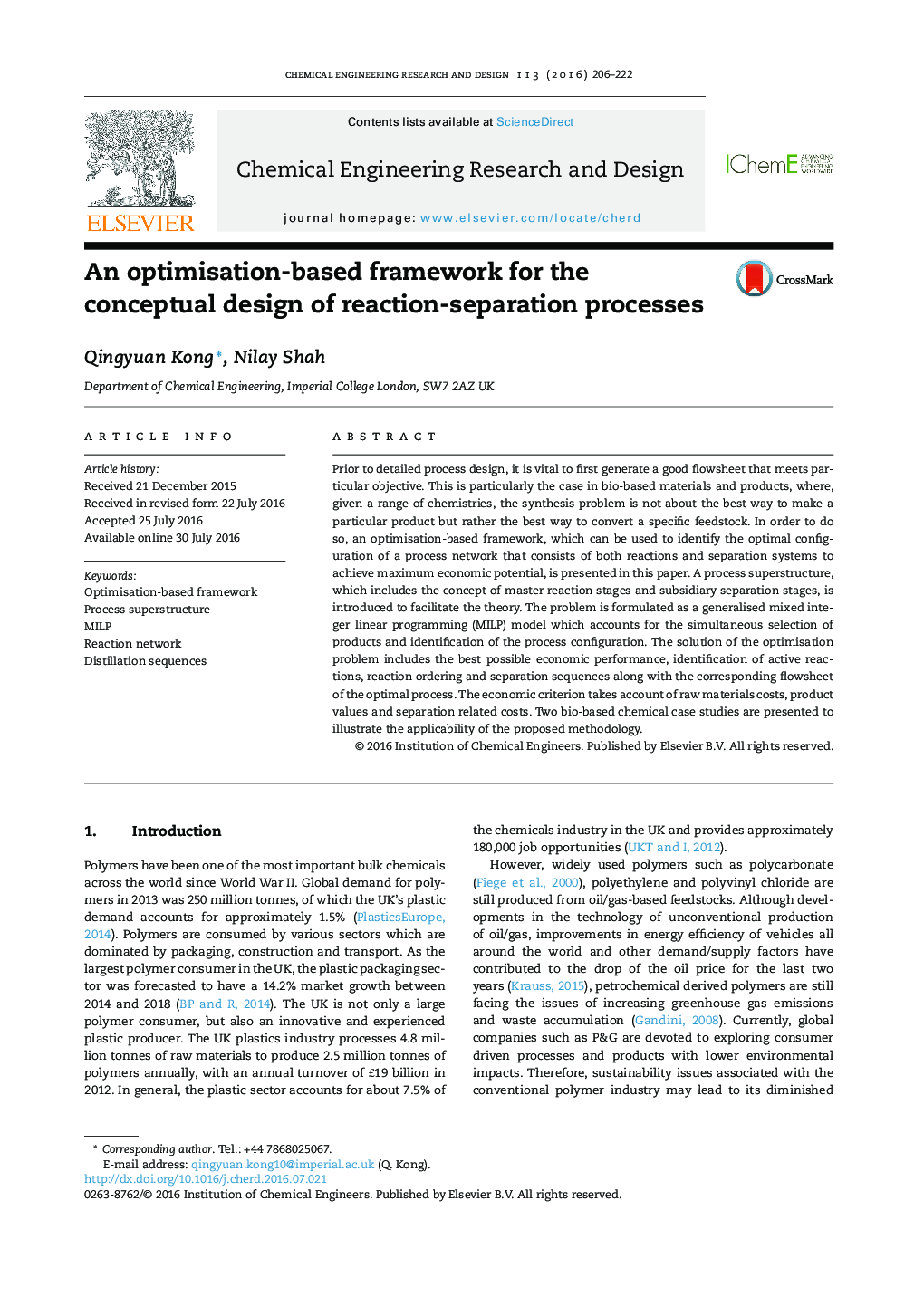| کد مقاله | کد نشریه | سال انتشار | مقاله انگلیسی | نسخه تمام متن |
|---|---|---|---|---|
| 620328 | 1455155 | 2016 | 17 صفحه PDF | دانلود رایگان |
• An illustrative process superstructure is introduced.
• The reaction network is integrated with separation systems in the process.
• An MILP model is developed to identify the optimal set-up of the process flowsheet.
• The optimal flowsheet which yields the highest economic potential is obtained.
• Two case studies are presented to demonstrate the applicability of the approach.
Prior to detailed process design, it is vital to first generate a good flowsheet that meets particular objective. This is particularly the case in bio-based materials and products, where, given a range of chemistries, the synthesis problem is not about the best way to make a particular product but rather the best way to convert a specific feedstock. In order to do so, an optimisation-based framework, which can be used to identify the optimal configuration of a process network that consists of both reactions and separation systems to achieve maximum economic potential, is presented in this paper. A process superstructure, which includes the concept of master reaction stages and subsidiary separation stages, is introduced to facilitate the theory. The problem is formulated as a generalised mixed integer linear programming (MILP) model which accounts for the simultaneous selection of products and identification of the process configuration. The solution of the optimisation problem includes the best possible economic performance, identification of active reactions, reaction ordering and separation sequences along with the corresponding flowsheet of the optimal process. The economic criterion takes account of raw materials costs, product values and separation related costs. Two bio-based chemical case studies are presented to illustrate the applicability of the proposed methodology.
Figure optionsDownload high-quality image (151 K)Download as PowerPoint slide
Journal: Chemical Engineering Research and Design - Volume 113, September 2016, Pages 206–222
